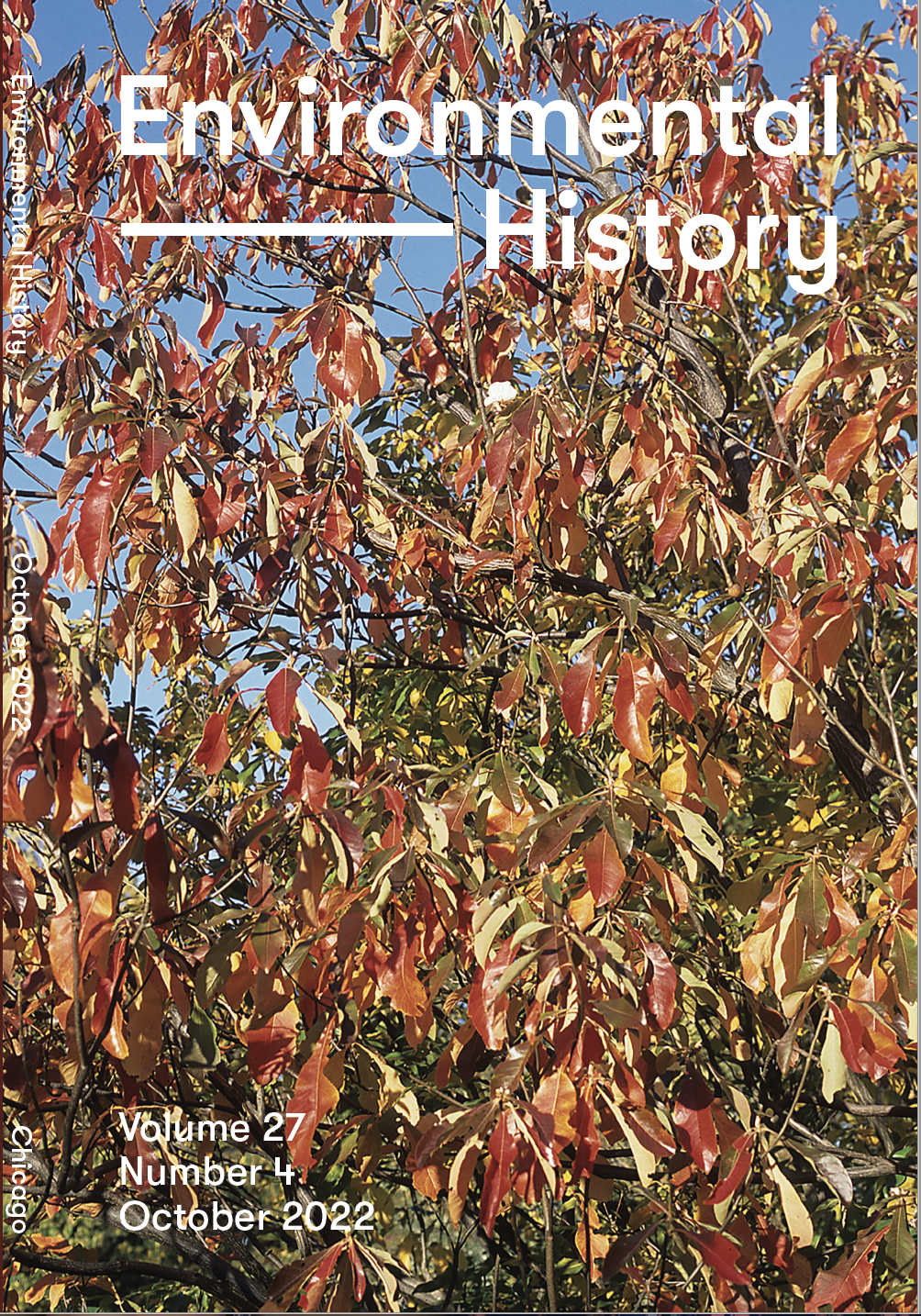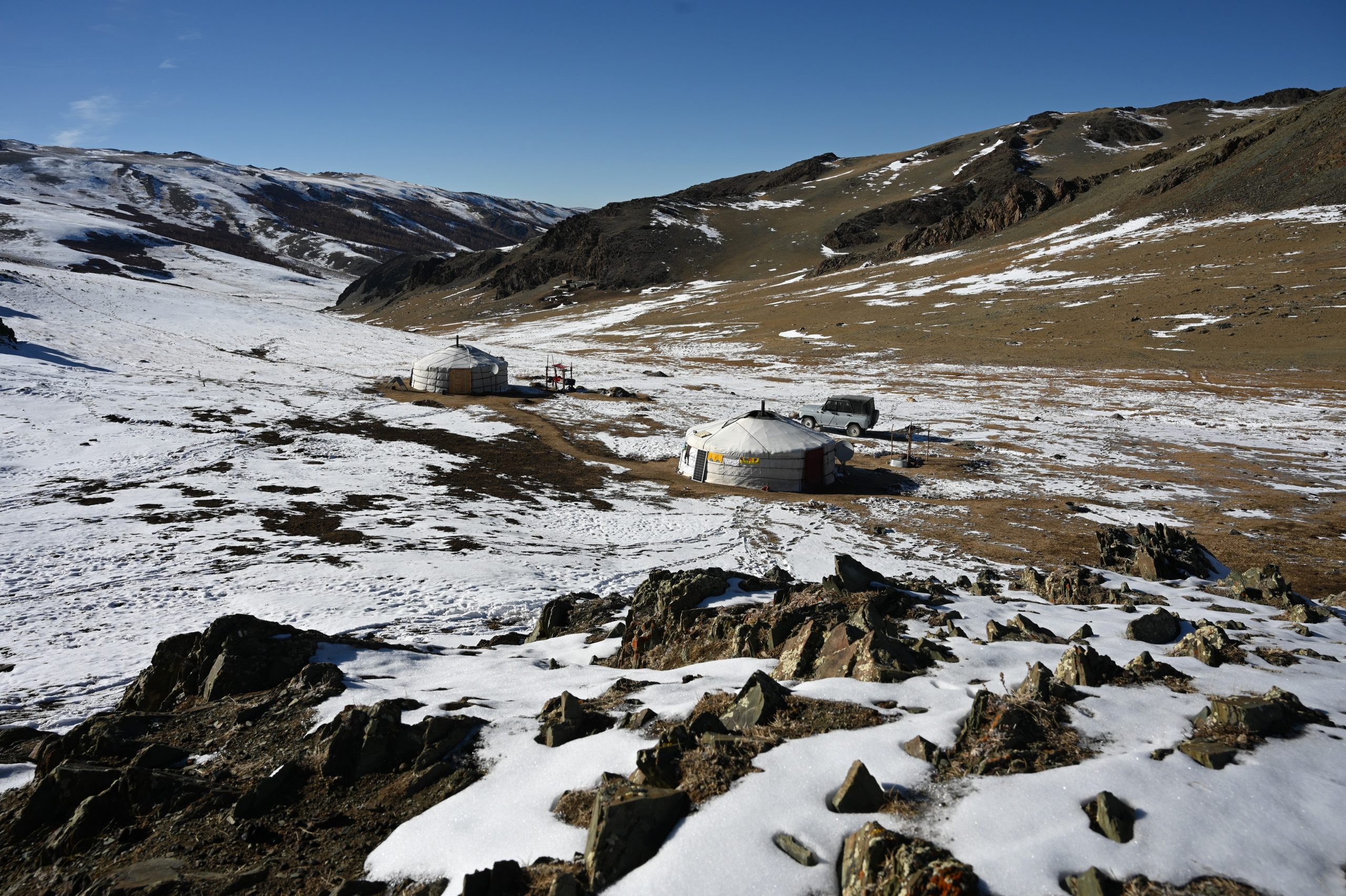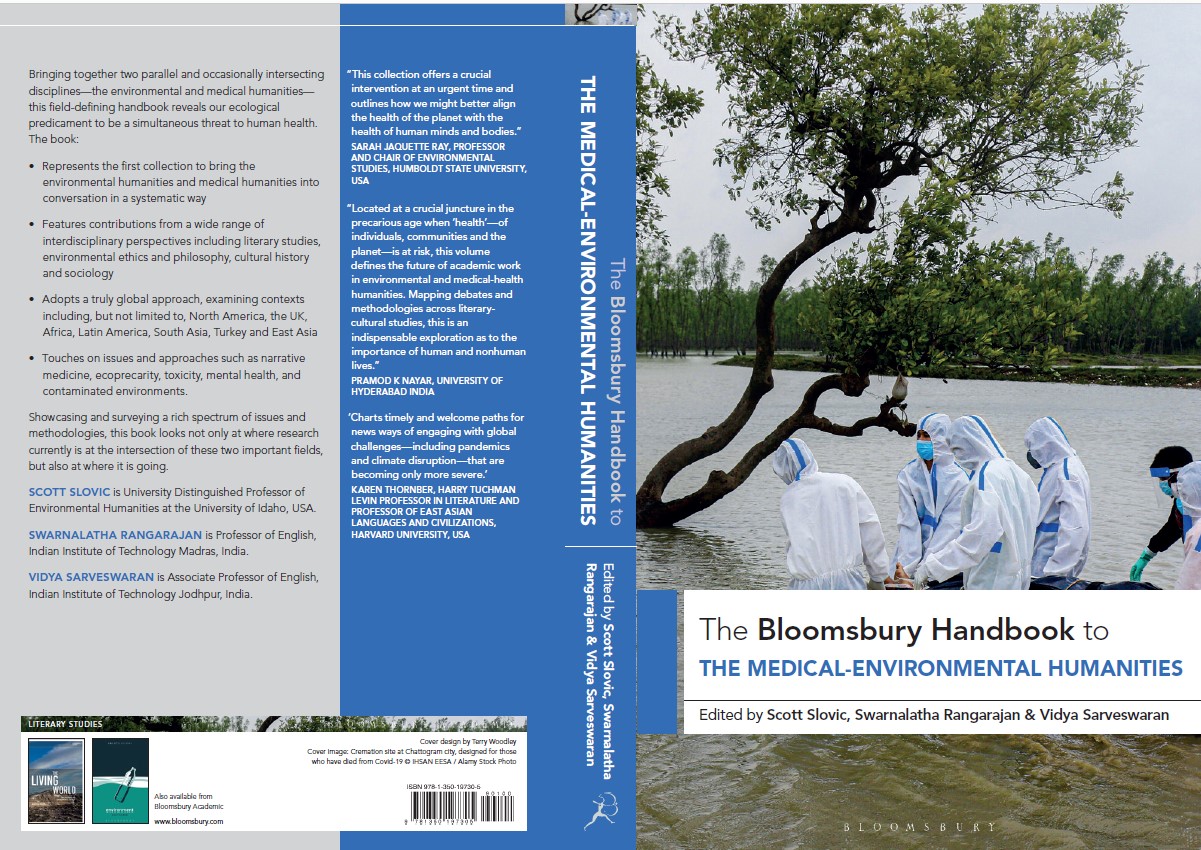
Article Alert: Illiberal Environmentalism? The Case of Contemporary Hungary in Environmental History 4/2022


News, Events, Podcasts, Videos

November 22 (Tuesday) 14.00-15.00 (CET)
Register HERE for link
The Patriot Ecology of the French Far Right
Venus Bivar, University of York
Environmental History of South Asia in the time of Hindutva
Rohan D’Souza, Kyoto University
Authoritarianism, Populism, and the Environment in Turkey
Onur Inal, University of Vienna
Environmental and Climate Policies as the New Hobby Horse: The “Alternative for Germany” and the German Right-Wing
Julia Obertreis, Friedrich-Alexander-Universität
Illiberal Environmentalism? – The Case of Contemporary Hungary
Viktor Pál, University of Ostrava
Scorched Land: the Erosion of Environmental Governance during the Bolsonaro Administration
Lise Sedrez, Universidade Federal do Rio de Janeiro

Date: 11 November 2022. Time: 16.15 – 17.45. Venue: Budapest (Hungary), University of Public Service, Wing Building, John Lukács Hall.
The event takes two recently published readers of environmental history as its point of departure. Please note that the official language of the event is Hungarian.
The volumes that serve as the basis of discussion are:
Balogh, Róbert – Bodovics, Éva – Demeter, Gábor – Erdélyi, Mátyás – Eszik, Veronika – Vadas, András: Táj, ember, tudás – zöldtörténelem. Bevezetés a környezettörténet irodalmába. Budapest, Bölcsészettudományi Kutatóközpont, 2021. and
Balogh, Róbert – Bodovics, Éva – Demeter, Gábor – Erdélyi, Mátyás – Eszik, Veronika – Vadas, András: Tájátalakítás, járványok, vizek, birodalmak – zöldtörténelem. Tanulmányok a környezettörténet irodalmából. Budapest, Bölcsészettudományi Kutatóközpont, 2022.
Since the point of the publications was to facilitate access to the body of literature and approaches in Hungarian language, the discussions will also use that language. The event consists of two roundtable discussions with four participants each. The duration of discussions will be about 40-45 minutes each.
The first of these will address the importance and current state of disseminating knowledge about environmental history in Hungary. The confirmed participants of the first roundtable are:
Margit Kőszegi (Eötvös Loránd University, Budapest, Karst and National Parks Project)
Anna Varga (University of Pécs, Department of Ethnography and Cultural Anthropology, post-doctoral researcher)
Gábor Demeter (Centre for the Humanities, Institute of History, Budapest, Nation and Empire: Practices of knowing and transforming landscape in Hungary and the Balkans, 1850-1945 Project)
Veronika Eszik (Centre for the Humanities, Institute of History, Budapest, Nation and Empire: Practices of knowing and transforming landscape in Hungary and the Balkans, 1850-1945 Project)
The theme of the second discussion is the way politics within empires and the politics of nation-building influenced human-environment relations in the 19th-20th century.
The confirmed participants of the second roundtable are:
Margit Kőszegi (Eötvös Loránd University, Budapest, Karst and National Parks Project)
Gábor Demeter (Centre for the Humanities, Institute of History, Knowledge, Landscape, Nation and Empire: Practices of knowing and transforming landscape in Hungary and the Balkans, 1850-1945 Project
Veronika Eszik (Centre for the Humanities, Institute of History, Budapest, Knowledge, Landscape, Nation and Empire: Practices of knowing and transforming landscape in Hungary and the Balkans, 1850-1945 Project)
Róbert Balogh (University of Public Service, Eötvös József Research Centre, Institute of Central European Studies, Budapest, Knowledge, Landscape, Nation and Empire: Practices of knowing and transforming landscape in Hungary and the Balkans, 1850-1945 Project)
POSTPONED
November 24 (Thursday) 14.00-15.30 (Helsinki), live
Victoria Soyan Peemot, PhD Indigenous Studies, University of Helsinki
Place: University of Helsinki, City Center Campus, Porthania Building, Room P444
For ZOOM Link Register HERE the day before the event. You will receive the zoom link an hour before the program begins.
In this paper, I aim to draw attention, first, to the Finnish geographer Johannes Gabriel Granö’s concept of perception of the environment which makes use of senses: seeing, hearing, smelling, and touching (1929 [1997]), and to the ways in which Granö’s ideas are close to current anthropological approaches to the human-nonhuman sociality with an emphasis on embodied experience (Anderson 2000, Willerslev 2007, Ingold 2011, Oehler 2020). Second, I analyse Granö’s multisensory understanding of the environment from the perspective of Indigenous relational epistemology (Salmón 2000, Wilson 2008, Peemot 2021, Virtanen 2022). To do so, I bring in the Indigenous voices—of people who live in the Altai and Sayan Mountainous region of Inner Asia where Granö worked in the 1900s. This study leans on research of J. G. Granö’s archives which are available at the Finnish Literature Society (publications, maps, correspondence, and photographs) and multisensory ethnographic fieldwork in Inner Asia from 2015 to 2022.

November 18 (Friday) 10.00-11.30 (Helsinki), hybrid
Place: University of Helsinki, City Center Campus, Porthania Building, Room P444
For ZOOM Link Register HERE the day before the event. You will receive the zoom link an hour before the program begins.
The concept of a national park came to Europe from the United States and quickly became popular in the 20th century. The USSR was no exception: the idea of a national park was copied from the West and first implemented in the Estonian Soviet Socialist Republic in 1973. The Republic of Karelia became a pilot region in the development of national parks and ecotourism in Russia in the 1990s. However, the Soviet attitude to nature protection differed in many aspects from the European one. The system of protected areas in the USSR assumed numerous restrictions for visitors and nature was protected not for people, but from them. Planned national parks, therefore, were perceived more as an obstacle than as an opportunity.
The transformation of the Soviet and Karelian nature included not only the transition to a new form of protected area (i.e., national parks) but also a new way of consuming nature (i.e., ecotourism), which was supposed to become a part of the economy. The process of transforming nature, despite a successful start in the early 1990s and the foundation of two national parks in the Republic of Karelia, has faced a number of difficulties and contradictions. This presentation reveals the main theses of my dissertation and demonstrates the reasons for the unpopularity of Karelian national parks and the slow development of ecotourism.
Alexander Osipov is a researcher at the Karelian Institute (University of Eastern Finland, Joensuu). His licentiate’s thesis on the Civil War in Russian Karelia was defended in 2006 at Petrozavodsk State University (Russia). He completed his doctoral thesis on the environmental history of Russian Karelia in September of this year. His research interests lie under the umbrella of environmental history and include protected areas, ecotourism, human-nature relationship, environmental conflicts and Finnish-Russian border cooperation. He is also interested in the Russian Civil War and Finnish kinship wars. His publications in English, Finnish and Russian include edited collections, a book chapter, a monograph, articles and book reviews.

November 3 (Thursday) 13.00-14.30 (Helsinki) 12.00-13.30 (CET), online
Animals and/in Soviet Famines in Ukraine. Where Is an Animal in Famine Studies?
Iryna Skubii, Queen’s University
For ZOOM Link Register HERE the day before the event. You will receive the zoom link an hour before the program begins.
During the famines, deterioration of the economic and environmental conditions in rural and urban areas lead to the dramatic consequences for people and domestic and wild animals. In Soviet Ukraine, in the years of the famines of 1921–1923, 1932–1933, 1946–1947 as the millions of people were starving and dying so were their animals. Being the instruments of the Soviet collectivization, the excessive grain and fodder requisitions left cattle and household animals without sufficient fodder. As animals suffered from hunger, they were physically exploited as labour force, slaughtered, and caught en masse due to lack of conventional food. Exploring the interconnections and interdependencies of human and animal history during the times of extremes, the presentation invites the audience to think about the history of famines as an interspecies catastrophe.

Online event on Wednesday 9 November 2022 at 3 p.m.
During the presentation curator Ulla Taipale talks about cormorants, the Baltic Sea and Chorus sinensis and shows audio-visual material exhibited in Pori Art Museum last summer.
Chorus sinensis is an audio-visual choral work dedicated to the great cormorant (Phalacrocorax carbo sinensis). It was produced between 2019 and 2022 in the coastal areas of the Bothnian Sea, where human and seabird territories overlap. The work asks: Is the great cormorant worthy of a human song? What will be the great cormorant’s tale told in the future?
Conceived and curated by Ulla Taipale, the piece combines videos, photographs and recordings made by artist Jan Eerala, with a choral composition inspired by the great cormorant written by composer and sound artist Lau Nau. The team includes Karoliina Lummaa, a literary researcher specialising in bird literature; Merja Markkula, a biologist and artist who served as costumier in the project; and the Poseidon choir: Kristina Bakić, Eeva Bergroth, Anna Jussilainen, Tuija Kuoppamäki, Aleksi Pihkanen, Sami Siitojoki, Teemu Suuntamaa, Susanne Ådahl and Iina Ukkonen.
IHME Helsinki organizes the online event open for all in Zoom. Register for it to get the link to Zoom by 9 November 1 p.m.>>
Merimetso – laulun arvoinen
Verkkotapahtuma keskiviikkona 9.11.2022 klo 15.00
Keskiviikkona 9.11.2022 pidettävässä verkkotapahtumassa kuraattori Ulla Taipale kertoo merimetsoista, Itämerestä ja Chorus Sinesis -teoksesta sekä esittää Porin taidemuseossa viime kesänä esillä ollutta audiovisuaalista materiaalia.
Chorus sinensis on merimetsoille (Phalacrocorax carbo sinensis) omistettu audiovisuaalinen kuoroteos. Se on toteutettu vuosina 2019–22 Selkämeren rannikolla merilintujen ja ihmisten toisiaan sivuavilla reviireillä. Teos kysyy: Onko merimetso ihmisen laulun arvoinen? Millainen tarina merimetsosta huomispäivänä kerrottaisiin?
Ulla Taipaleen ideoimassa ja kuratoimassa teoksessa yhdistyvät taiteilija Jan Eeralan kuvaamat videot, valokuvat ja äänitykset sekä säveltäjä ja äänitaiteilija Lau Naun merimetsoista inspiroitunut sävelteos kuorolle. Työryhmään kuuluvat myös lintukirjallisuuteen erikoistunut kirjallisuudentutkija Karoliina Lummaa ja puvustajan roolissa biologi ja taiteilija Merja Markkula, sekä Poseidon-kuoro: Kristina Bakić, Eeva Bergroth, Anna Jussilainen, Tuija Kuoppamäki, Aleksi Pihkanen, Sami Siitojoki, Teemu Suuntamaa, Susanne Ådahl ja Iina Ukkonen.
IHME Helsinki järjestää kaikille avoimen verkkotapahtuman Zoomissa. Ilmoittaudu mukaan 9.11. klo 13 mennessä saadaksesi linkin Zoomiin >>
October 30 (Sunday) 18.00-19.00 (Helsinki), 9.00-10.00 (Idaho), online
For ZOOM Link Register HERE the day before the event. You will receive the zoom link an hour before the program begins.
Organizers:
Scott Slovic, University of Idaho, USA; Swarnalatha Rangarajan, IIT Madras, India; and Vidya Sarveswaran, IIT Jodhpur, India
Contributors:
Fazila Derya Agis, Henry Obi Ajumeze, Mita Banerjee, Françoise Besson, Chia-ju Chang, Kathryn Yalan Chang, Kiu-wai Chu, Marcos Colón, Chinonye Ekwueme-Ugwu, Z.Gizem Yilmaz Karahan, Susanne Lettow, Tess Maginess, Jorge Marcone, Animesh Mohapatra, Eric Morel, Chinmay Murali, Raghul V. Rajan, Heather Leigh Ramos, Animesh Roy, John Charles Ryan, Lars Schmeink, Tathagata Som, Jyotirmaya Tripathy, Robin Chen-Hsing Tsai, Sofia Varino, Sathyaraj Venkatesan, Samantha Walton, Maria Whiteman, Nikoleta Zampaki
Description:
This book, which appeared in August 2022, aims to bring together two parallel disciplines: the environmental humanities and the medical humanities. Theories of disease, disrepair, treatment, recovery, and health, from various cultures, shed light on literature and other forms of expression concerned with how we understand the relationships between our human bodies and minds and the planet. In the twenty-first century, we must try to understand the mental health implications of climate change, the ecoprecarity caused by increasingly toxic environmental conditions, and the challenges of facing vast, slow processes that jeopardize not only the external world but our own physical safety. The essays in this collection aim to reveal our ecological predicament as a simultaneous threat to human health. This launch event will be an opportunity for contributors to the book to say a few words about their chapters and for other attendees to ask questions and offer insights about the “medical-environmental humanities.”

Tetiana Perga, State Institution “Institute of World History of National Academy of Science of Ukraine”, Volkswagen Foundation Fellow, Heidelberg University, Germany
October 30 (Sunday) 10.00-11.30 (Helsinki), online
For ZOOM Link Register HERE the day before the event. You will receive the zoom link an hour before the program begins.
Various agricultural, industrial, and household wastes played a major role in the formation of the Soviet economy in the 1920s and 1930s. This paper will reveal the role of agricultural waste such as bristles and hair. The author will demonstrate that the brushes and tussles that were made from bristles and hair were small but indispensable “cogs” in the work of Soviet heavy industry, construction, transport, shipbuilding, textile, flour milling, printing and other industries. The author will analyse the technological process of bristle and hair processing, which Soviet engineers constantly tried to improve in order to increase the yield of raw materials and simultaneously minimize the waste of this production. The problems faced by bristle and hair procurers in the USSR during this period due to the lack of livestock waste and the famine of 1932-1933 will be shown. Ways of replacing bristles and hair with domestic and exported plant materials will also be discussed.

October 31 (Monday) 15.30-16.30 (Helsinki) 14.30-15.30 (CET), online
Moderation: Simone Schleper (Maastricht University)
Participants:
Iva Pesa (University of Groningen), Dan Finch-Race (University of Bologna), Nicola Thomas (Lancaster University), Leo Steeds (University of Warwick), Anna Costantino (University of Greenwich), Somayyeh Amiri (Shahid Beheshti University), Alice Cunningham (Artist, Bristol)
For ZOOM Link Register HERE the day before the event. You will receive the zoom link an hour before the program begins.
The concept of the Anthropocene confronts us with many questions of value related to the central role of humanity in shaping the planet. It is important to pay attention to what is valued, how, and by whom. However, practices of valuing are not consistent within societies or between them, and different values can even complicate cooperation when it comes to solving environmental and social challenges.
The proposed roundtable brings together authors and organizers of the recently launched website and interdisciplinary, open access educational resource www.groundingvalue.org.
The website presents research on value making in the age of the Anthropocene from around the world for the benefit of students from a range of subject areas. Its aim is to introduce questions of value in the Anthropocene through a series of ‘object lessons’, presented through texts and visuals. Each lesson addresses a distinctive set of value-making practices through engagement with a real or imagined object.
The material on the website was workshopped in November 2021 and shaped by the visual artist Alice Cunningham, thanks to funding from the British Academy and the Royal Netherlands Academy of Arts and Sciences (KNAW).
We would like to use the roundtable to reflect on the creative process underlying the website’s content (two online workshops with pre- and post-submissions, including ‘object lessons’, multisensory representation exercises guided by Alice Cunningham, and group discussions), as well its potential uses in undergraduate teaching.
